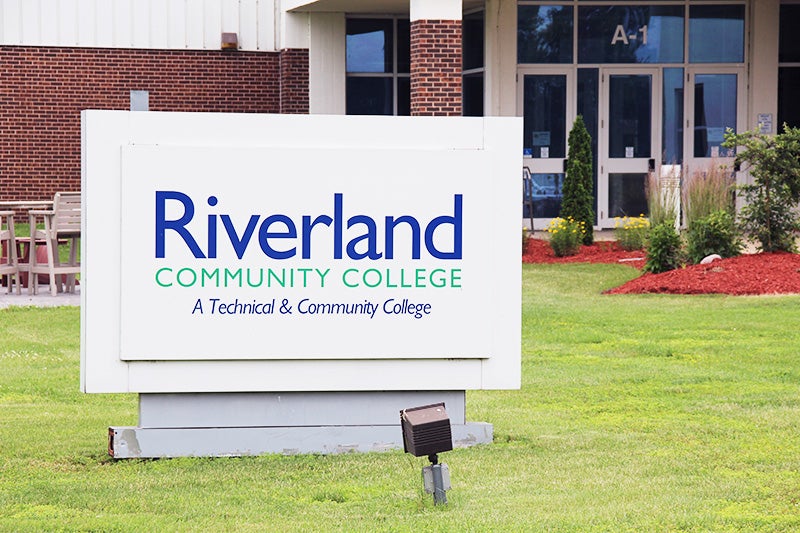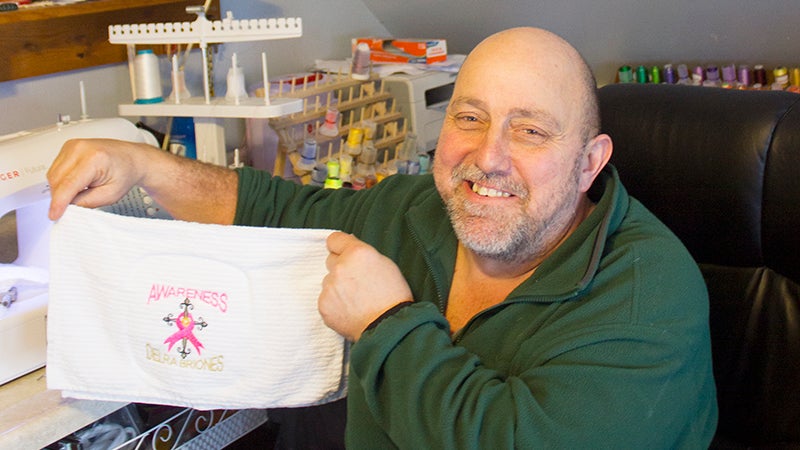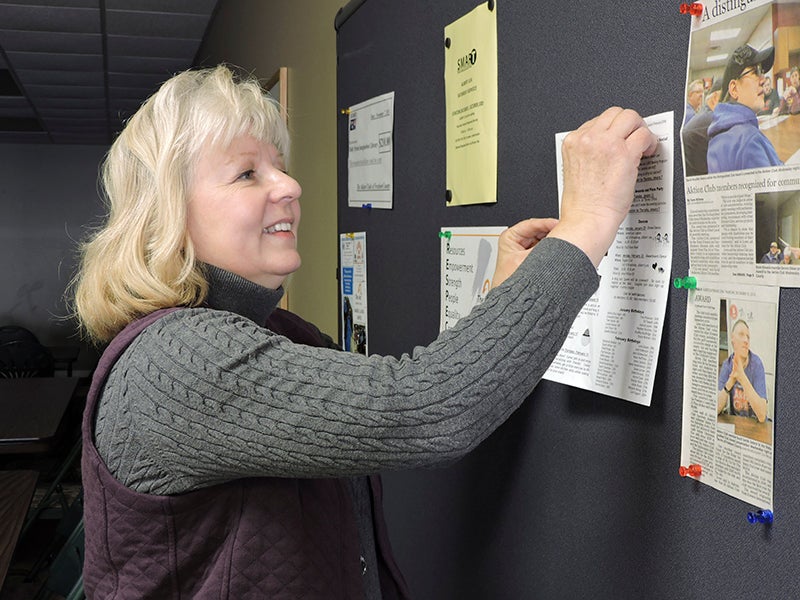Riverland program develops ag skills
Published 1:17 pm Wednesday, June 8, 2016

- Brody Shaw and Madison Tebay work on a project working on GIS date in January at Riverland Community College in Austin. - Eric Johnson/Albert Lea Tribune
Curriculum focuses on needs of industry, education for rising farmers
Riverland Community College has big plans as it expands its reach in the agriculture sector.
Riverland announced six new ag-based programs in fall 2015 — precision agriculture, food science, food science technology, agricultural sciences, biotechnology and agribusiness — to unveil its Center for Agriculture and Food Science, thanks in part to a $263,200 Hormel Foundation grant.
“With the Hormel Foundation grant, we’ve done a lot,” Center for Agriculture and Food Science Director Uchenna Chukwu said. “We’ve done significant revisions to our program, we have expanded the programming options to our students in response to not only workforce needs, but also in response to what our high school faculty are asking for.”
Riverland’s newly developed ag programs joined Riverland’s established farm business management program, which school leaders call one of the college’s most popular programs. To lead the way with the amped-up programs, Riverland hired Chukwu this summer as director of its Center for Agriculture and Food Science.
Chukwu hopes the center will be around and meeting the needs of the community for a long time. She calls the center “academically rigorous and purposefully relevant for our entire community of stakeholders.”

Riverland Community College received a $263,200 Hormel Foundation grant for its new Center for Agriculture and Food Science program. -Tribune file photo
The program has three basic principles: innovation design thinking, hands on experiential learning through simulation labs, and international or global perspective. The program has also expanded from a crop focus to include animal agriculture.
Chukwu said the programs have changed the way Riverland looks at agriculture classes. One of the first things organizers did was figure out the programming model for the agriculture center.
“We decided to emphasize innovation and technology, or innovation and design thinking in our curriculum,” Chukwu said.
The program has six certifications broken into three groups: ag technology, food technology and bio technology. Then, organizers started to build programming ideas and curriculum ideas based on those three structures. Some of the ag program’s key lessons include application of technology to agriculture, food and biotechnology in order to enhance or improve food and energy production systems, as well as an emphasis in service lessons. Another lesson students will learn is how to adapt to changing times, wants and needs from people with their food, along with changing climates.
Forming a program
After Riverland formed the six ag center programs, Chukwu and her team started researching the workforce needs that would drive what the curriculum teaches. Chukwu described going out to talk with farmers and riding a combine — and getting dust everywhere — while trying to figure out what the farming community needs in the future workforce.
“They were great,” she said. “The farmers were extremely helpful in helping us to understand from a farming technology perspective what their needs were.”
Farmers wanted workers in three main areas: to better understand how to utilize their ag data, to help with maintenance and repairs, and to develop smartphone apps to use their ag data.
After finding out what the ag and farming community wanted from a precision agriculture perspective, Chukwu got to work creating “pathways” that students can take during their college career and combine certificates to help them graduate.
One challenge is that an associate’s degree must produce graduates after two years of training who are equipped and ready to go out and get a job.
“It became important to figure out what certificates should be combined in order to give our students that competitive edge in the marketplace,” she said.
Certificate combinations include precision and ag business, which can help in the data field; precision ag and engineering certificate ,which can help in the maintenance field; and precision ag and web and mobile development, which can help in the smartphone ap and mobile programming technician field.
Organizers did the same thing for the food technology program, breaking it into the R&D path, the industry and marketing path, and the plant operations path.
“We wanted to make sure that every one of the types of stockholders that we serve and that we work with has an opportunity to employee some of our students,” Chukwu said.
Certificate combinations include food science and innovation design thinking, which can help in the R&D environment; food science and applied engineering technology, which can help in the maintenance and repair equipment in food plants; and food science and business concentration/social media, which can help with food bloggers or tapping into the industry and marketing. Organizers hope the simulation lab will be operational by the end of this semester.
The biotechnology program is still being worked out. Chukwu said there has been a lot of time spent finding out what the community needs.
Partnerships
Riverland’s ag program has also developed a partnership with the National Science Foundation, which allows students to do applied research and teaches them to be innovators and researchers. Organizers applied for a grant in October 2015 for the partnership.
The program officially launched in the spring 2016 semester, with one class in precision ag and about eight students. Chukwu said a drone program, for example, is not only a resource for students but also for stakeholders, where they can access that service and have assistance on additional work done on a farm or property.
“Our first year has been challenging, but that’s why we’re working so diligently with the high schools and with the community, to tell them that we’re here, and to tell them that we’re going to remain here,” she said. “We want to be around for a long time.”
Before and after Riverland
Organizers didn’t want to simply create a program at the college level, though. They wanted to make sure it didn’t overlap with what students were already learning in high school.
Last December, organizers went to area high schools to find out what they were teaching students, and where there was overlap between high school curriculum and college curriculum.
“Of course we are in Austin, Albert Lea, Owatonna, but that’s not where we stopped,” Chukwu said. “We went to a number of different places and sat down and took a look at the curriculum to understand what they’re teaching and also how to align the teaching from one level to the next.”
Organizers received $25,000 through a grant from the Office of Higher Education to develop advanced courses to be taught in high school through concurrent enrollment options. Four schools will receive the classes initially, including Austin, Albert Lea, Owatonna and Alden-Conger, but Chukwu said the program will expand to other area high schools.
Because of the funding, organizers can now do one or two weeks of training and development with high school ag faculty to teach them a little bit more about Riverland’s ag curriculum they developed in combination and collaboration with them.
The programs also aim to “emphasize global, international, emphasize innovation and design thinking, and emphasize hands-on experiential learning through our simulation labs,” Chukwu said.
The programs don’t have to end with Riverland. Along with Riverland’s associate degrees, the programs will include opportunities for students to continue on to earn four-year degrees through a partnership with Minnesota State University, Mankato for food science technology, biotechnology and agricultural science. A similar pathway for agronomy has been established with Southwest Minnesota State University and a pathway in Agriculture Teacher Education is under development.
The expanded ag program follows a path set by Riverland’s 2013 strategic plan, dubbed “The Blueprint for Excellence,” which identified agriculture as a top priority over the years ahead and identified the Austin campus as the anchor site for the programs that will serve students across the region.





